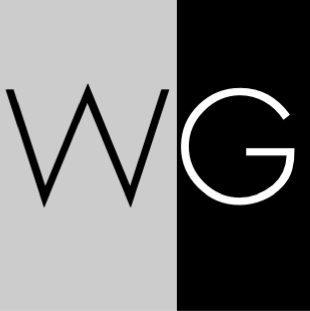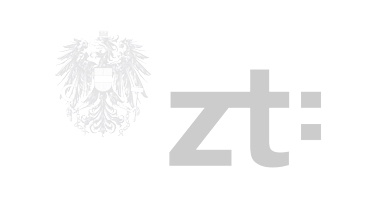CE-Mark Maschines
Procedures for Assessment of Conformity acc. to European Machinery Directive 2006/42/EC MD
By affixing the CE-Mark on a machine, its OEM asserts its complicance, on the day of hand-over, with all applicable European Directives and Regulations. Among these are, most notably:
- Machinery Directive 2006/42/EC – MD,
- Low Voltage Directive 2014/35/EU – LVD,
- EMC Directive 2014/30/EU or Radio Euipment Directive 2014/53/EU – RED,
- other directives or regulations that may apply.
For most machines, an OEM may do so under their own responsiblity.
Harmonized Standards must fully be adhered to for those dangerous machines contained in annex IV of machinery directive.
OEM have to compile a Technical File comprising among others, a description of the machine, its assembly drawing, operations instructions, and risk assessment.
The latter is best established right at the start of design.
OEM eventually assert meeting essential safety and health requirements of all applicable European directives and regulations. EC-Declaration of Conformity must be signed by a manager, who is authorised to represent the company. In most cases this is the CEO.
Engineering consultant Wolfgang Grassberger
I have actively been involved in applying safety requirements of machinery directive since 1995. I deliver practial solutions for all safety issues. Do not hesitate to reach out to engineering consultant Wolfgang Grassberger, MBA for competent assistance in:
- Conducting risk assessment
- Fixed and moveable guards
- Safety distances according to cut-out size and shape
- Minimum distances required by safety curtains
- Required performance level PLr acc. to DIN EN ISO 13849‑1
- Validation acc. to DIN EN ISO 13849‑2
Special Terms:
Back to conformity assessment procedures- Annex IV
- MD annex IV is a summary of particularly dangerous machines.
- Harmonized Standards
- OEM may assess a machine on their own, even if listed in annex IV, provided that harmonized standards are fully implemented for all essential safety requirements (see article 12, paragraphs 3 and 4).
- Full Quality Assurance
- OEM has to establish an approved quality system for design, manufacture, final inspection and testing of machines built, thereby ensuring their compliance with essential safety provisions. The quality system in turn shall be assessed and audited in regular intervals by a notified body.
- Notified Body
- A notified body is entitled to conduct EC-type examination of machines. Such services are offered in Austia by e.g. TÜV Austrian and TÜV Süd.
- Technical File
- An OEM assesses and documents compliance with provisions in a Technical File. It contains, among others, drawings, circuit diagrams, P&ID, functional description, risk assessment (see annex VII part A).
- Internal Checks
- An OEM conducts internal checks in order to validate a fully assembled machine against its Technical File (annex VIII paragraph 3).
- EC-Declaration of Conformity
- OEM or importer of a machine into the European Market issues a declaration with content according to annex IIA. It is signed by the CEO.
- CE-Mark
- The CE-Mark as shown in annex III must be placed on the machine plate, next to the OEM's name .
- EC-Type Examination
- A notified body representative verifies a machine's Technical File and validates a built sample for compliance with provision put forth by machinery directive (see annex IX).
FAQ
Back to conformity assessment proceduresHow can a machine receive a EC-Declaration of Conformity?
Under the European Machinery Directive 2006/42/EC – MD, any manufacturer may declare conformity of a machine with essential safety and health requirements of European Machinery Directive under their own responsibility. Harmonized standards must be applied to machines listed in Annex IV, or else those have to be type-examined by a notified body such as one of the four TÜV organizations.
How is the CE-Mark attached to a machine?
By attaching the CE-Mark on a machine, it is marked by its manufacturer to comply with relevant essential safety and health requirements of all applicable European Directives and Regulations. Among these, Machinery Directive 2006/42/EC, Low Voltage Directive 2014/35/EC, and EMC-/Radio-Directive are the most common. For some, additional directives must be adhered to. Many machines may be assessed and checked on their manufacturer's own responsibility. A risk analysis is one of the required parts of the machine's technical file. It is much advisable to reach out to a competent engineering consultant such as an Austrian Ziviltechniker für Elektrotechnik.
Do I need to CE-mark a machine intended for internal use only?
Even when manufacturing a machine for one's own exclusive use, it must nevertheless be assessed and marked for conformity before being put into service (see European Machinery Directive 2006/42/EC – MD article 2 i) and article 5). Such machines for own use must comply with all relevant essential safety and health requriements put forth by annex I of MD. Among other documentation, operations instructions, risk assessment, EC-declaration of conformity, and the CE-mark are required. This also holds for lifting accessories.
Do I need to contract with TÜV in order to declare conformity of a machine?
An EC-Declaration of Conformity is always signed by the manufacturer. Endorsement from a notified body such as TÜV is mandatory only for those machines listed in annex IV of European Machinery Directive 2006/42/EC, if resp. machine has not been fully evaluated by adhering to Haromized Standards. Other applicable European Directives and Regulations may enforce additional procedures with the involvement of notified bodies, for e.g. pressure equipment.
How long is en EC-Declaration of Conformity valid, can it be re-newed?
A Declaration of Conformity applies to a machine only on the very day of handover from manufacturer to its user. Conformity can only be asserted for the condition in which machine is first brought on the market or put into service (see annex II of European Machinery Directive 2004/42/EC). Later modification is never covered by the original document. Substantial changes which introduce new, or enlarge exsting, risks, create a new machine, which warrants its own new Declaration of Conformity.


